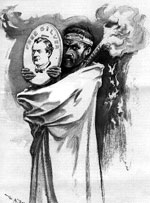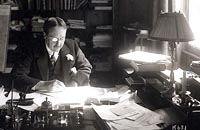Teaching about Presidential Elections
A wealth of historical material exists on the web to support teaching about presidential elections.
The National Archives and Records Administration (NARA) uncovers the mysteries of the Electoral College through text, documents, interactives, and links to K12 curricular resources.
HarpWeek's Explore History offers political cartoons and prints from presidential elections between 1860 to 1912. Other materials include an up-close look at the controversies surrounding the Hayes vs. Tilden election of 1876 with explanatory essays and primary source materials drawn from Harper's Weekly.
HistoryCentral.com supplies statistics on all U.S. presidential elections. For each election year, the site presents graphs showing popular and electoral votes, maps of states won by each candidate, vote count, and voter turnout statistics.
America Votes at the Duke University Special Collections Library compiles presidential election memorabilia with brief background information on critical issues in selected campaigns. The materials illustrate that political spin and negative campaigning are not new inventions.

